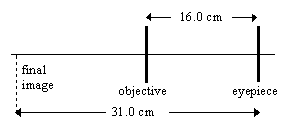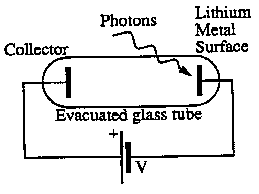1996/97 Test 4 Parts B & C
To aid you with your exam preparation, the following are the Parts B and C questions from the 1996/97 fourth midterm. (NOTE: The Part A questions of the 1996/97 fourth midterm are the questions in Self-Graded Quiz #4.)
B1. A beam of protons, moving horizontally with speed 6.19 × 105 m/s, is directed from north to south in the northern hemisphere. The Earth's magnetic field at this point has a magnitude of 8.00 × 10�5 T and is at an angle of 58° below the horizontal. Calculate the magnitude of the magnetic force which acts on each proton.
B2. The critical angle for a particular type of glass is measured to be 58.7° when a piece of this glass is immersed in water (nwater = 1.33). Calculate the index of refraction of this glass.
B3. Calculate the separation of two slits that cause the second order maximum for light of wavelength 546 nm to occur at an angle of 0.600°.
B4. Calculate the deBroglie wavelength of an electron moving with a speed of 7.50 × 106 m/s.
B5. Determine the energy of the photon emitted when an electron in the hydrogen atom undergoes a transition from the n = 8 level to the n = 6 level.
C1. When a 25.0-ohm resistor is connected across the terminals of a real battery, the current in the circuit is 0.477 A. If this resistor is then replaced by a 100-ohm resistor, the current in the circuit changes to 0.120 A. Calculate the internal resistance and the emf of the battery.
C2. A compound microscope consists of an objective lens of focal length 0.450 cm and an eyepiece lens of focal length 4.00 cm, separated by a distance of 16.0 cm.
b. Calculate the distance from the objective lens at which an object must be placed so that the image formed by the eyepiece lens is at �31.0 cm. (Note: do not use the approximate formula given in the textbook.)

c. For the microscope adjusted as in (a), calculate the magnification obtained when a person with a nearpoint of 25.0 cm uses the microscope.
C3. The photoelectric effect is studied using the apparatus shown. Light of wavelength 450 nm is incident on the lithium surface, which has a work function of 2.30 eV.

- Calculate the maximum kinetic energy of electrons emitted from the lithium surface (in eV).
- If the potential difference V is 1.00 V, calculate the maximum kinetic energy of the electrons that reach the collector plate.
Solutions:

